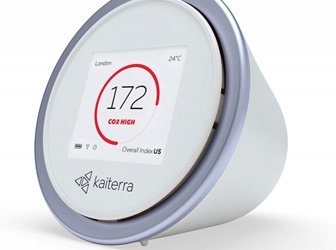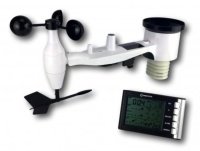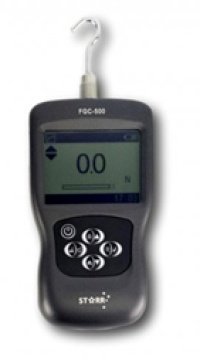Why an App-Based Air Quality Monitor is the Best Choice for a Healthy Home

We spend a great deal of time indoors - some studies say up to 90%, with around 70% in the home. Despite our habits and plenty of science informing us that poor air quality is detrimental to our health, you’d struggle to find any research on the topic.
But there’s good news! If you’re concerned about the condition of your home’s atmosphere, Instrument Choice can help. Monitoring and maintaining your indoor air quality is easier than you think with some easy-to-do tips and an App-Based Air Quality Monitor.
Unhealthy Indoor Air – What Are the Big Culprits?
The causes of household indoor air pollution are many and varied, but the most likely nasties include:
- Tobacco products
- Fuel-burning combustion appliances
- Building materials - like new upholstery, timber finishes, floorings, certain types of pressed wood products, and deteriorating asbestos-containing items.
- Chemicals in products used for personal care, cleaning, building construction and maintenance
- Central heating and cooling systems
- High levels of indoor moisture or humidity; and
- Vapours that get into your home from outside - like polluted air and pesticides.
Refer to “Appendix 1: Examples of Pollutants” below should you need more information about specific gases monitored by home air quality monitors.
Scientists’ Tips
The impact of any pollutant source depends on its concentration, harmfulness, and the adequacy of your home’s ventilation. So how can you start protecting yourself and your family? Here are six easy and practical things anyone can manage.
Introducing App-Based Home Air Quality Monitors
Indoor air quality can be monitored in different ways, and you’ll find a confusing variety of air quality monitors out there. But our team has been checking out the latest exciting group of devices – WIFI-enabled app-based indoor air quality meters. These gadgets make managing home air pollution a cinch!


The Benefits of Using an App-Based Home Air Quality Monitor
Home air quality is always in a state of flux, so to better manage your home’s atmosphere, you need an environmental “feedback” system.
App-based home air quality monitors now let you receive air quality data from a variety of devices so you can:
- respond to air pollution issues in real-time
- narrow down harmful sources and - most importantly;
- monitor the positive impacts of your changes in real-time.
Five Great Examples App-Based Air Quality Meter
Here are some of the best app-based air quality sensors that use WiFi and specially designed mobile applications to upload your air quality information to The Cloud.
uHoo Indoor Air Quality Sensor
In a NutshellThe uHoo is a sophisticated indoor air sensor that monitors and updates you for nine key indoor air parameters! The InterfaceThe sensor interfaces exclusively via the uHoo application (Android and Apple). With this app, you can:
Exactly What Does The uHoo Monitor?
|
Laser Egg
In a NutshellKaiterra’s Laser Eggs comprise a series of three aesthetically pleasing smart home air quality monitors. Each will continuously communicate whether you are breathing clean air at home. The InterfaceLaser Egg models feature an LCD screen to view all your current home air quality at a glance, together with an intuitive mobile app - “Live Air by Kaiterra” (Apple and Android) for:
Check out the three Laser Egg models below. |
|||||
Laser Egg
|
|||||
| Go to Laser Egg IC-LE-200 page |
Laser Egg + Chemical
IC-LE-201
Measures: PM2.5, TVOC, Temperature and Relative Humidity

| Go to Laser Egg IC-LE-201 page |
Laser Egg + CO2
IC-LE-202
Measures: PM2.5, CO2, Temperature and Relative Humidity

| Go to Laser Egg IC-LE-202 page |
AirLink Air Quality Sensor
|
| Go to the Davis AirLink Air Quality Sensor page here |
The Last Word
Instrument Choice Scientists recommend app-based indoor air quality monitors for accurate, up-to-the-minute air quality monitoring you can retrieve anywhere, at any time. With all the important information at your fingertips, you can create a safer home environment for you and your family.
For more information on app-based air quality sensors, speak with an Instrument Choice Scientist! Call 1300 737 871 or email [email protected].
Appendix 1: Examples of Common Home Air Pollutants
1. Carbon Dioxide (CO2)
Indoor CO2 at high levels will cause drowsiness, a feeling of sluggishness, and headaches. High CO2 levels within a home indicate inadequate ventilation relative to your indoor occupant density and metabolic activity.
2. Particulate Matter
Particulate matter refers to microscopic particles of solid or liquid matter suspended in the air. You will often find particulate matter abbreviated as ‘PM’ and the particulate matter size as ‘PM10’ and ‘PM2.5.’ In addition to concentration, size matters when it comes to the health effects of PM. The most common particulate matter that IAQ meters measure is PM2.5. High levels of PM2.5 are known to cause cardiovascular and respiratory diseases and cancers. Sources of particulate matter include smoke from fires and wood heaters, car and truck exhaust, and airborne industry pollutants.
3. Volatile Organic Compounds (VOC)
Volatile organic compounds refer to various chemicals emitted from some solids or liquids in the form of gas. VOC concentration tends to be significantly higher indoors. Examples of VOC emitting products include; paints and lacquers, cleaning supplies, building materials, furnishings, pesticides, and glues.
4. Nitrogen Dioxide (NO2)
Short term exposure to high levels of Nitrogen Dioxide can act as an irritant to the eyes and nose. Repeated or long term exposure can resue in acute or chronic bronchitis. NO2 is the primary source of nitrate aerosols, which form a fraction of PM2.5 and - in the presence of ultraviolet light - ozone.
5. Ozone (O3)
Ozone at or near ground level is one of the main components of photochemical smog. Ozone forms from a reaction between sunlight and pollutions like nitrogen oxides and VOCs. Ozone levels will be highest during periods of sunny weather. Excessive ozone in the air can cause breathing issues, reduce lung function, trigger asthma, and cause lung disease.
6. Carbon Monoxide (CO)
Carbon Monoxide is tragically one of the most acutely toxic indoor air contaminants. It is a colourless and odourless gas absorbed by the human body more readily than oxygen. In high enough concentrations, carbon monoxide will quickly act to deprive the brain of oxygen. High levels of carbon monoxide can lead to nausea, unconsciousness, even death.
7. Temperature & Humidity
While temperature and humidity profoundly affect comfort, they also influence the quality of indoor air. When humidity is too low, eyes and skin will become irritated. When humidity is too high mould, and mildew will flourish.
Also interesting
Instrument Choice’s team of scientists regularly reviews new and popular products, so when searching for the perfect scientific instrument for your application, you can make more informed decisions.
This review analyses the Digitech XC 0400 Weather Station (IC0400WS)
Read on for the scientists’ complete review of the Digitech XC0400 Weather Station (IC0400WS)

The IC-FGC-500 is a robust instrument that measures force - specifically tension and compression forces. Multiple measuring modes, user-selectable measuring units and a data logging capability make the IC-FGC-500 well-suited for various industrial applications.
Get your IC-FGC-500 step-by-step setup guide here



